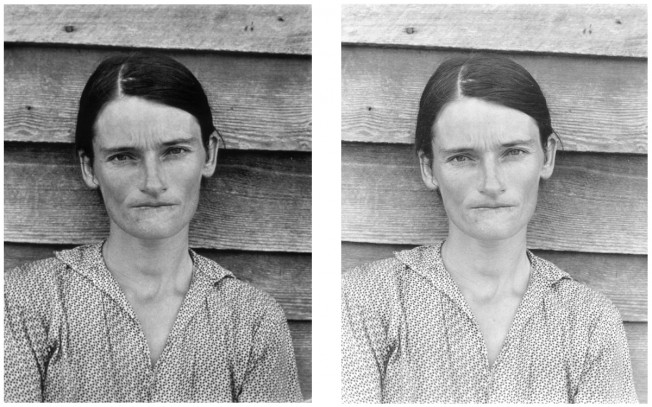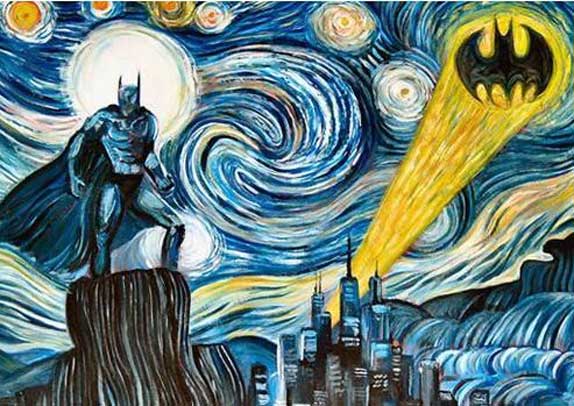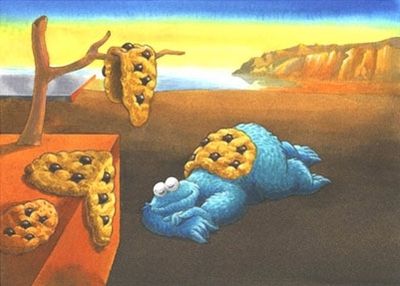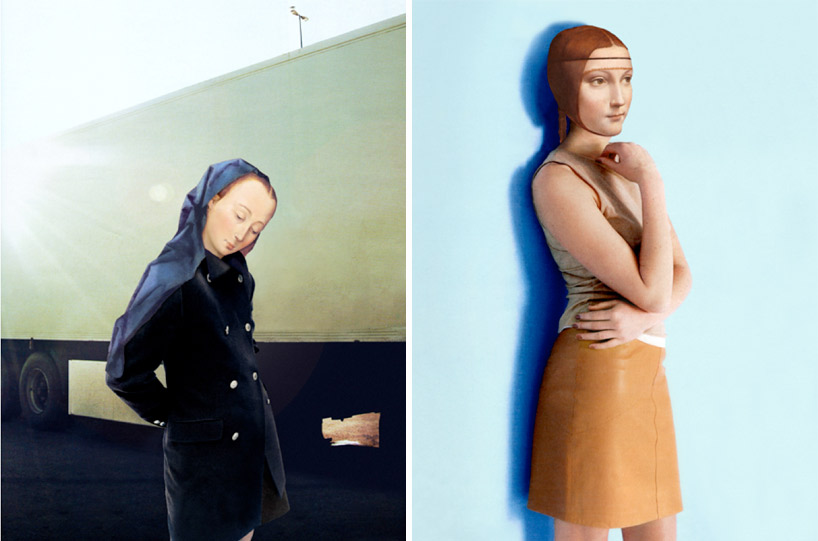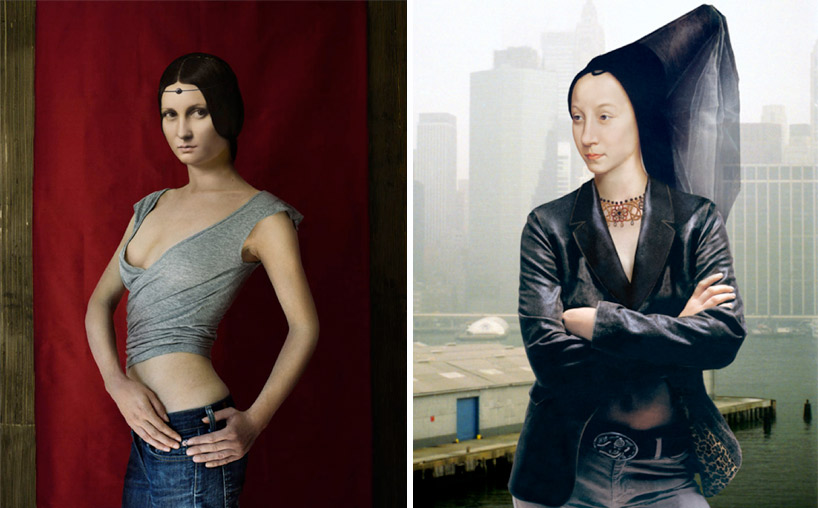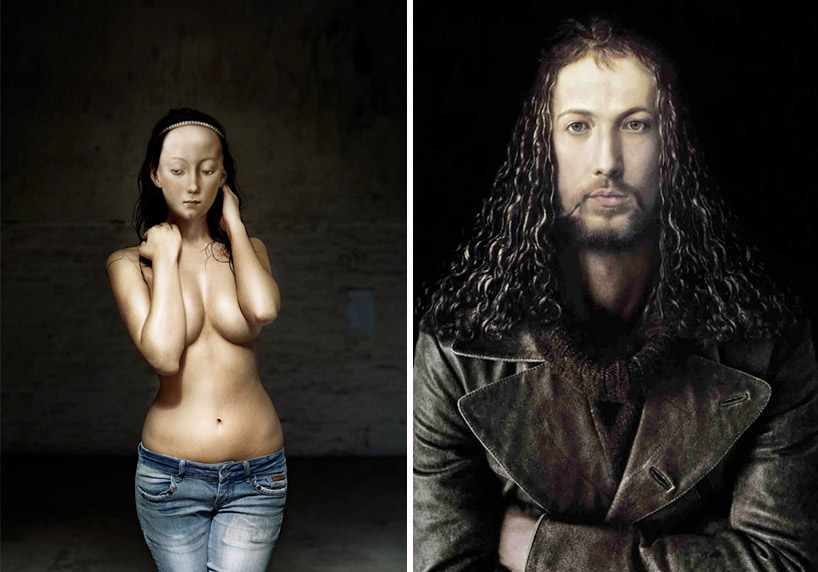The pastiche and parody is a form of appropriation. Sometimes they can overlap each other and it’s difficult to clearly state which form of appropriation is presented.
Appropriation
“The deliberate reworking of images and styles from earlier, well-known works of art.” (Oxford dictionary)
Appropriation is a reuse of material and the recognition of the original in the copy is required.
Sherrie Levine
I think the most extreme form of appropriation was body of work by Sherrie Levine. She simply re photographed well-known photographs and other works made in different media without any manipulation. The most famous piece from this series is a photograph called “After Walker Evans.” Walker Evans was an American photographer documenting the effects of the Great Depression.
Sherrie Levine ‘stole’ the images from the original photo’s history and brought them before a contemporary audience. The aim her actions were to give a new way of experiencing what can be gained/changed over the passage of time. They can be looked through a prism of different contexts.
Levine suggested that we see and understand things in a condition from our own experiences, collective and singular, shared and private.
During my research I found information that Levin had questioned how gender, authority, or the status of an author affects the meanings of an image.
The question is where is the boundary between appropriation and plagiarism? I think her body of work challenged the notions of authorship and originality.
Parody
“An imitation of the style of a particular writer, artist or genre with deliberate exaggeration for comic effect.” (Oxford dictionary)
Parody involves making fun of something and exaggerating some of the original elements to make it appear ridiculous. The parody doesn’t compete with the original as it appeals to a different audience.
I admit I find it amusing to watch good parody videos, pictures and drawings. The original picture is the base to create a new amplified meaning for the parody.
Music:
Parody of Taylor Swift song- I knew you were trouble
Film:
Do You Want to Build a Meth Lab? (Frozen x Breaking Bad Parody/pastiche)
Paintings:
Pastiche
“An artistic work in a style that imitates that of another work, artist, or period.” (Oxford dictionary.)
Pastiche for me is copying something and contextualizing it to create an entirely different message.
Dorothee Golz
Golz drew inspiration and borrows some elements in the original works, in this instance Renaissance paintings. She adapts them in a new contemporary environment giving them a different meaning.
“The fundamental question of my work is what is reality formed upon? A typical process in my work is the combination of different media of expression; reality is based upon our personal, historical and cultural background. In my digital paintings my perception of reality is confronted with the perception of reality during the Renaissance.”
The images look very realistic; faces are perfectly merged with the surroundings. The body posture of the model slots perfectly with the face expression.
references:
Oxford dictionary. [online]. Available from: http://www.oxforddictionaries.com/
The Metropolitan Museum of Art. After Walker Evans: 4 [online] Available from: http://www.metmuseum.org/collection/the-collection-online/search/267214 [Accessed on 2nd February 2015 at 18.14].
design boom. (2012). Classic portrait faces on modern bodies by dorothee golz. [online]. 11th June 2012. Available from: http://www.designboom.com/art/classic-portrait-faces-on-modern-bodies-by-dorothee-golz/ [Accessed 2nd February at 19.56].
